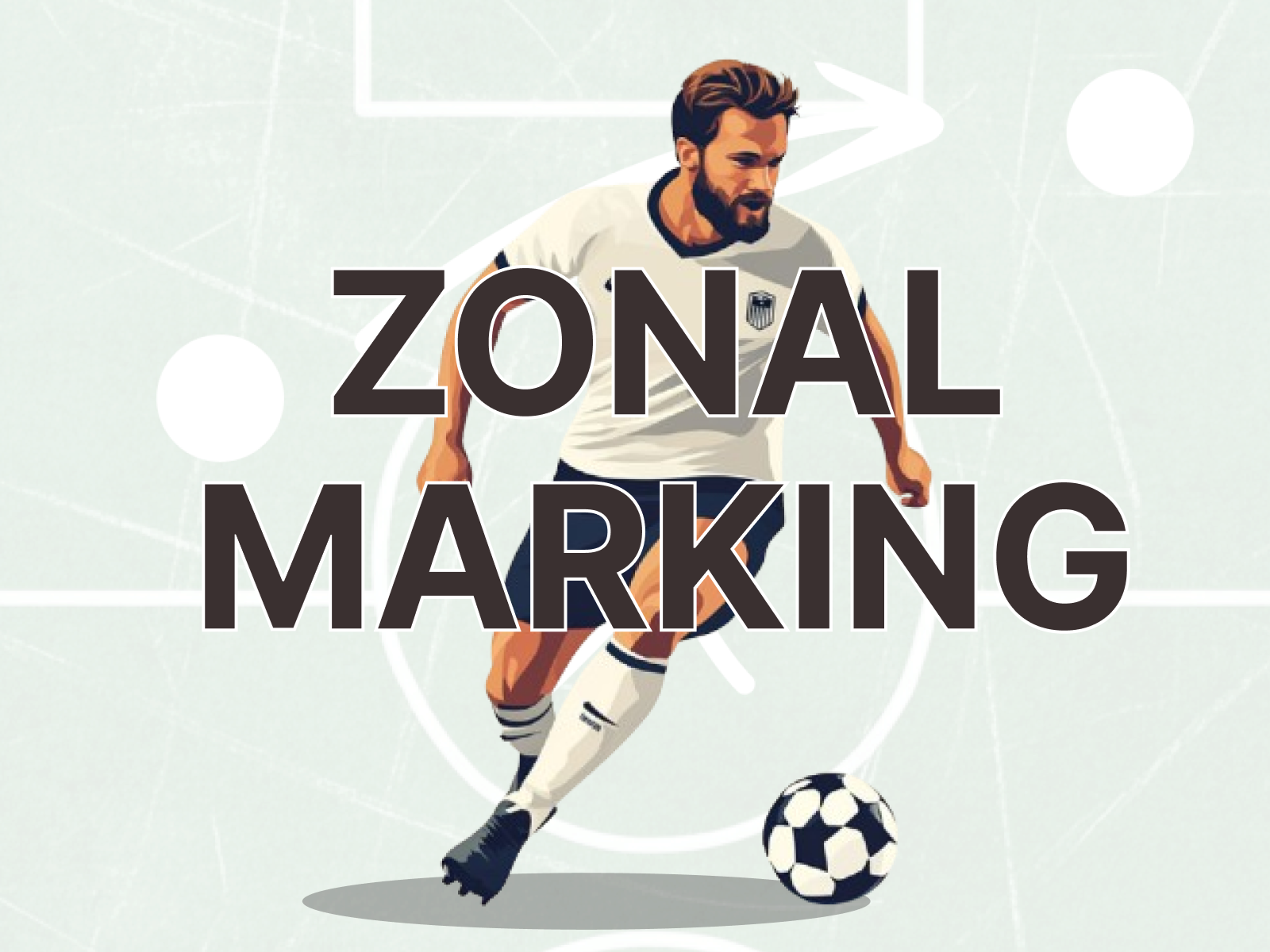In the fast-paced world of football, tactical approaches constantly evolve, and one defensive strategy stands out for its effectiveness: zonal marking. This sophisticated method allows teams to control space, dictate play, and stifle opposing attacks. It’s a core concept that has shaped the success of many top clubs and national teams around the globe.
What exactly is zonal marking, and how does it differ from traditional man-marking? Let's dive in.
What is Zonal Marking? A Core Concept
Imagine a football pitch divided into invisible defensive zones. When a player employs zonal marking, their primary responsibility is to defend a specific area of the field, rather than tracking a single opponent. This means that as an opponent moves into their designated zone, the zonal marker engages them. However, once that opponent leaves the zone, they are “passed on” to a teammate responsible for the next zone. It's a collective effort, emphasizing spatial awareness and team shape over individual duels.
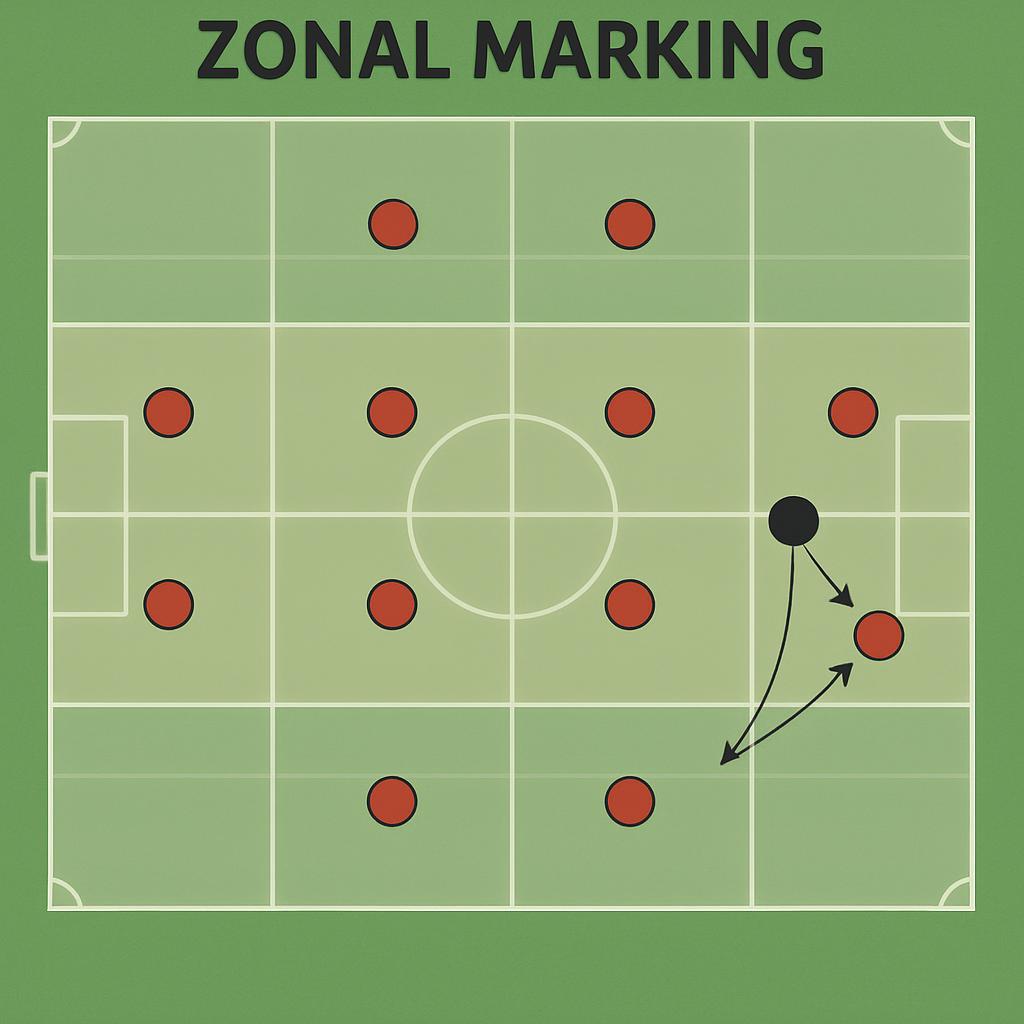
This approach contrasts sharply with man-marking, where each defender sticks to a designated opponent across the pitch, regardless of where that opponent moves. While man-marking can be effective for neutralizing specific threats, it often creates gaps when defenders are pulled out of position. Zonal marking, on the other hand, aims to keep the team's defensive structure intact, making it harder for opponents to find pockets of space.
The Principles of Zonal Marking
Implementing zonal marking successfully requires adherence to several key principles. These are the building blocks of a solid, impenetrable defensive unit.
First, compactness is paramount. A team must maintain a tight, organized shape, both horizontally and vertically, to deny opponents space in dangerous areas. Think of it like a shrinking net, pulling closer together as the ball approaches. This limits passing options and forces the opposition into wide, less threatening positions.
Second, collective movement is crucial. Players must move in unison, shifting as a unit in relation to the ball's position. If the ball moves to one side of the pitch, the entire defensive block shifts over, closing down space and maintaining balance. This isn't about individual players reacting, it's about synchronized team behavior.
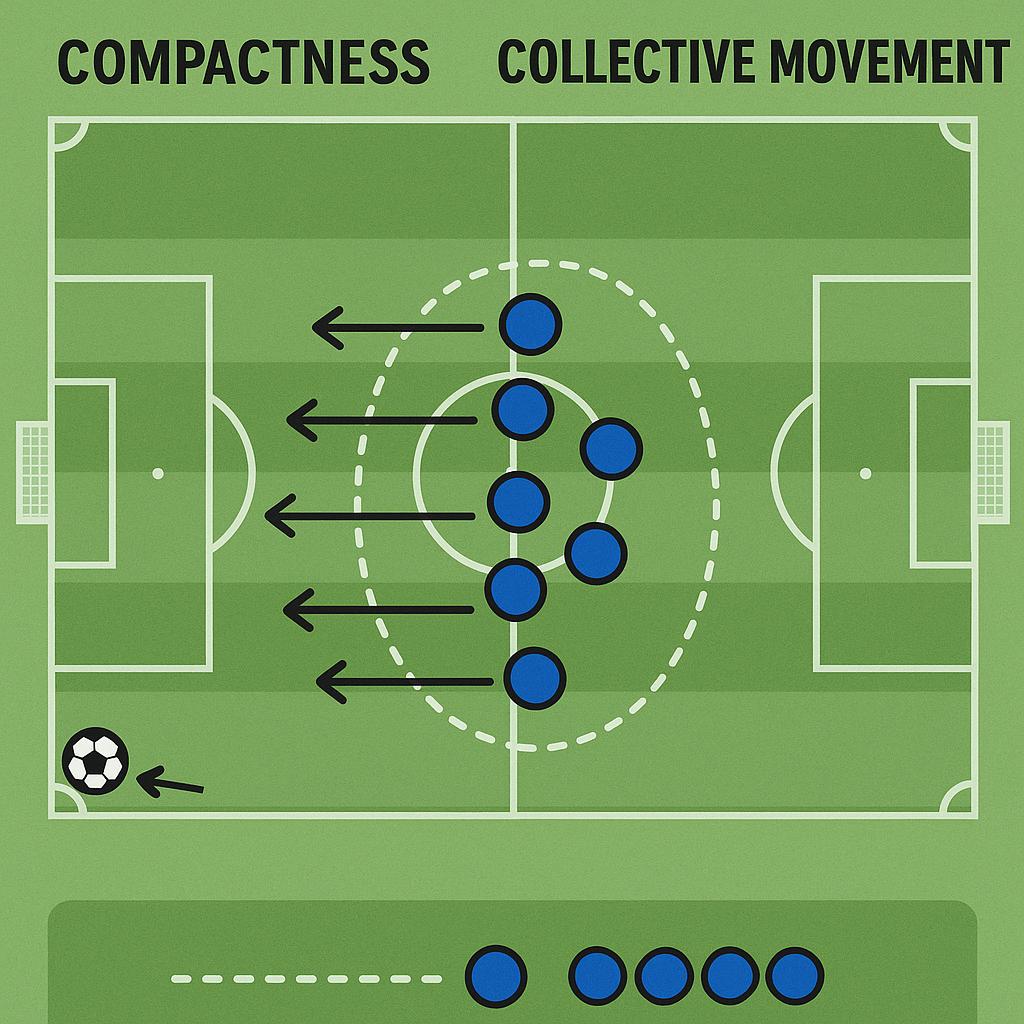
Third, awareness and communication are vital. Defenders constantly scan their surroundings, observing both the ball and potential opponents. Vocal cues are essential for informing teammates about incoming runners or changes in their zone. Clear communication prevents confusion and ensures smooth transitions of players between zones. For instance, a central defender might call out “man on!” to a midfielder who is about to receive the ball in their zone.
Fourth, understanding pressing triggers helps the team decide when to engage an opponent with the ball. This could be a poor first touch, a backward pass, or the ball entering a specific part of the pitch. When a trigger occurs, the nearest player presses the ball, while teammates adjust their positions to cover passing lanes and potential runs.
Finally, the concept of passing opponents on is fundamental. As an opposing player moves from one defensive zone to another, the responsibility for marking them is seamlessly transferred between teammates. This fluid handover prevents any player from being isolated or dragged out of position, maintaining the integrity of the team's shape.
Key Advantages of Zonal Marking
Why do so many successful coaches favor zonal marking? It offers several distinct benefits that can significantly improve a team's defensive solidity.
One major advantage is that it maintains team shape. Unlike man-marking, where players can be pulled across the field, zonal marking ensures defenders generally stay in their assigned areas. This creates a consistent, organized block that is difficult to break down.
It also reduces vulnerability to individual brilliance. If a team relies heavily on man-marking, a skilled dribbler can easily isolate and beat a defender, creating immediate danger. Zonal marking provides defensive cover by having multiple players positioned to challenge the ball, making it harder for one player to cause significant disruption.
Furthermore, zonal marking provides better coverage of dangerous areas, especially centrally. By prioritizing space over individual players, the team can ensure that key zones in front of goal are always protected. This forces opponents to play wide, where their crosses and shots are often less threatening.
Believe it or not, it can also facilitate counter-attacks. When a team wins possession in a compact zonal shape, they are often already in good positions to launch quick attacks. Players are already well-spread and can transition from defense to offense rapidly.
Lastly, it can be less physically demanding on individual players over a full match. While it requires immense concentration, players aren't constantly chasing opponents across the field, which can conserve energy for attacking phases.
Challenges and How to Overcome Them
No defensive system is without its drawbacks, and zonal marking presents its own set of challenges. Teams employing this strategy can be vulnerable to quick, intricate passing combinations that exploit the spaces between zones. Opponents might try to play quick one-twos or make diagonal runs into these gaps, aiming to disorganize the defense.
Another potential issue is the need for constant communication and understanding. If even one player fails to shift correctly or communicate effectively, it can create a weak point that opponents can exploit. This system demands absolute discipline and a deep understanding among all players.
So, how do teams overcome these challenges? The answer lies in intensive training and tactical drills. Coaches spend countless hours on the training ground, perfecting defensive movements, communication patterns, and pressing triggers. Drills that simulate game situations, focusing on collective shifting and quickly closing down passing lanes, are vital. Repetition builds muscle memory and intuitive understanding, turning complex movements into second nature.
Zonal Marking in Action: Famous Examples
Many of football's most successful managers have masterfully employed zonal marking to build formidable defensive units. Their teams serve as prime examples of this tactical approach in practice.
José Mourinho's Chelsea teams, particularly during his first spell, were renowned for their defensive solidity built on zonal principles. His back four and midfield operated as a compact unit, suffocating opponents and giving them little room to breathe in central areas. They were incredibly difficult to score against, often winning games with narrow margins.
Antonio Conte is another proponent, consistently building defensively strong teams like Juventus and Chelsea. His three-at-the-back systems at Chelsea, for instance, relied on well-drilled zonal movements from the wing-backs and central defenders to deny space and quickly transition to attack. His teams emphasized an aggressive press when the ball entered certain zones, quickly winning it back.
Perhaps no one exemplifies disciplined zonal marking more than Diego Simeone's Atlético Madrid. They are famous for their “Cholismo” philosophy, which centers on an incredibly well-organized, deep defensive block. Atlético's players rigidly maintain their shape, shift collectively, and deny opponents space in their own half. They force opponents wide and are incredibly resilient, often frustrating even the most potent attacking sides. This dedication to defensive shape has led them to multiple league titles and Champions League finals.
Implementing Zonal Marking with SPLY
For coaches looking to effectively teach and implement zonal marking, modern tools can be incredibly beneficial. The SPLY app, available on iOS, is a video soccer coach board that simplifies the process of illustrating complex tactics like zonal marking.
With SPLY's board editor, you can easily draw out defensive zones, illustrate player starting positions, and map out their movements. Need to show how your backline shifts? Draw it. Want to highlight pressing triggers? Mark them directly on the board. This visual aid is invaluable for helping players grasp complex spatial concepts.
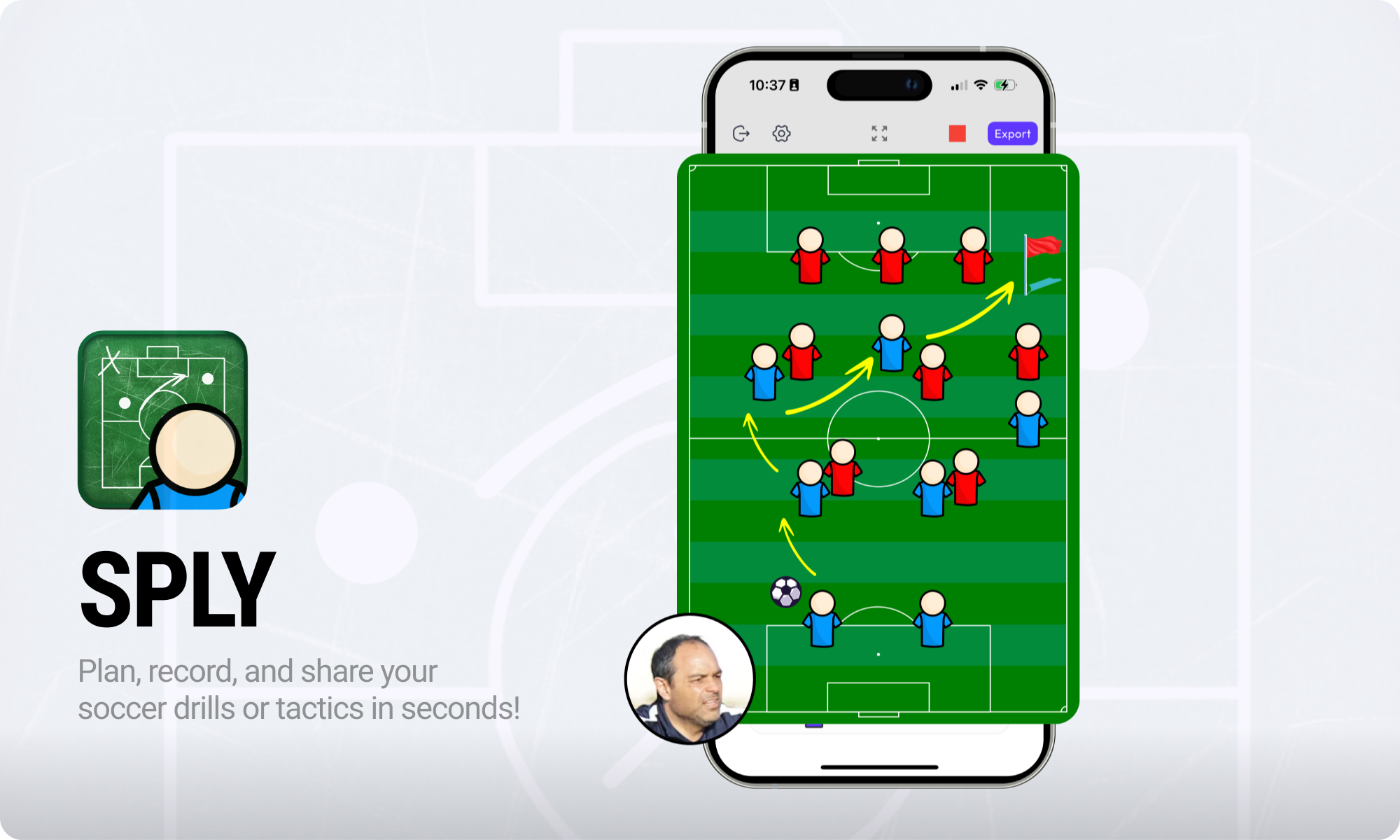
You can export your tactical diagrams to an image, making it easy to share with your team via messaging apps or printouts before a training session. This ensures everyone is on the same page regarding their zonal responsibilities.
Perhaps the most powerful feature for teaching dynamic concepts like zonal marking is the ability to create a video with your face and voice added to the board video while you are drawing or moving things on the board. Imagine being able to explain, “When the ball goes here, the right-back pushes up, the center-back slides over, and the midfielder drops,” all while narrating and moving the players on the screen in real-time. This interactive explanation brings tactics to life, helping players visualize the fluid movements required for effective zonal marking. It’s like having a digital whiteboard that talks and moves, making it far easier for your team to understand their roles and responsibilities within the system.
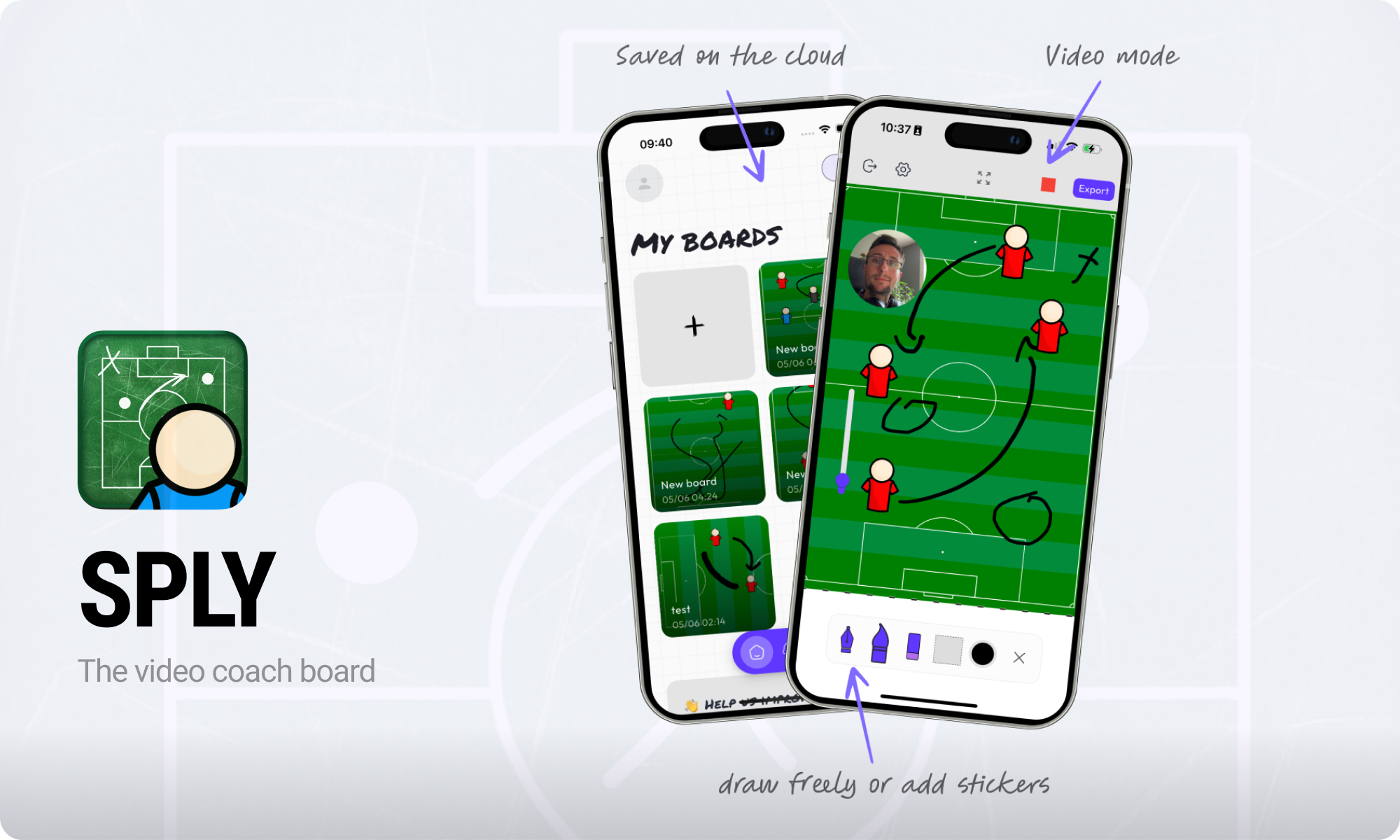
In conclusion, zonal marking is a cornerstone of modern football defense, offering a robust framework for teams to control space, maintain shape, and frustrate opponents. Its emphasis on collective movement, communication, and compactness makes it a highly effective strategy for coaches who value defensive solidity. By understanding its principles and leveraging tools like the SPLY app to visualize and communicate these tactics, you can empower your team to master this crucial defensive art. Are you ready to strengthen your team's defense? Explore how SPLY can revolutionize your tactical coaching today.
